Eons ago, back when dinosaurs still roamed the Earth, George W. Bush was still a first-term president, there were only five Star Wars films and Java applets were still cool, I created an applet that showed what Mars would look like if its surface was covered by oceans.
I liked what I did so I added the capability to use other data sets, including data sets for the Earth.
The applet is worthless now, or almost so. Java applets are no longer supported in Google’s Chrome browser. They were never really supported on mobile platforms. Even in browsers that do still support Java, the user has to go through hoops and add my domain as a security exception (not recommended) to allow my unsigned applet to run; all this a result of vain attempts to address the security risks inherent in Java and its implementations.
Anyhow, the applet still works if you can run it. And this is what the Earth looks like today:
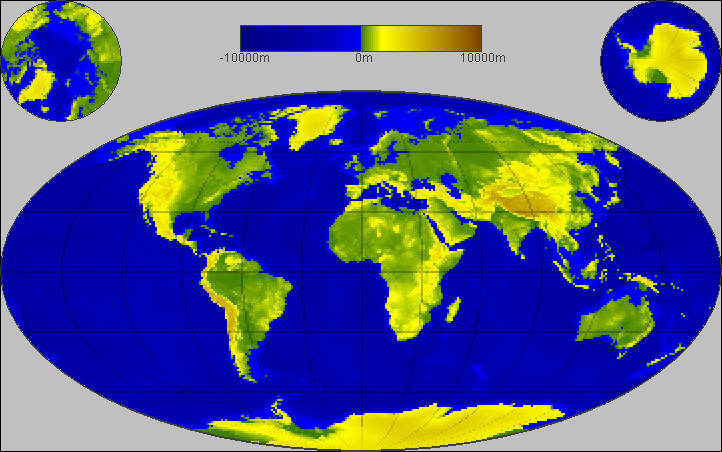
Someone recently asked what our planet would look like if it was devoid of oceans. If sea levels were 5000 meters below the present value, the planet would still have a shallow ocean in place of the Pacific. Otherwise, though, it would be mostly dry land with only some inland seas where the Atlantic and the Indian oceans used to be. It would be possible to walk from pole to pole without wetting your feet; however, you might get a tad thirsty along the way, and there’d not be much rain either.
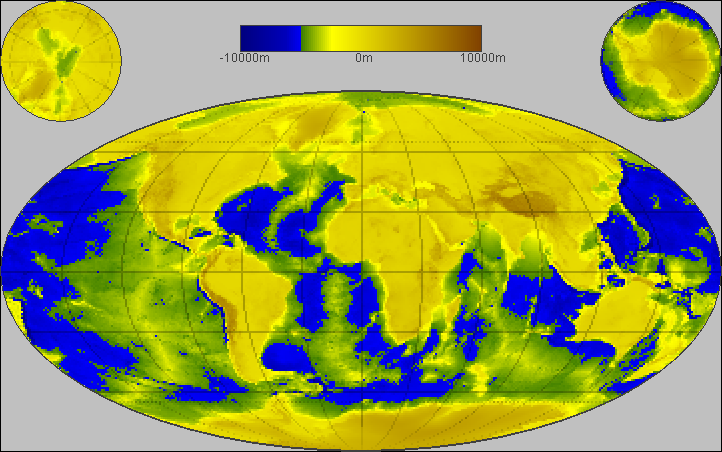
Decrease ocean levels by another 1000 meters to 6000 below present sea levels, and the last remaining ocean is gone:
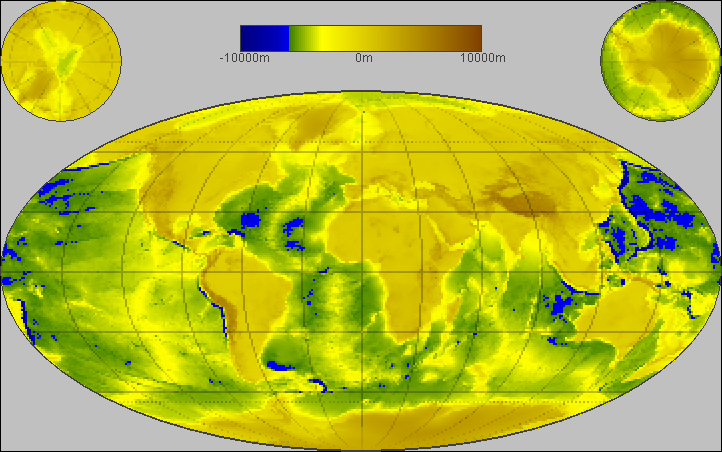
Finally, at 7000 meters, the only open water that remains would be in places of the deepest ocean trenches. (Mind you, even then, some of these seas would still be up to four kilometers deep.)
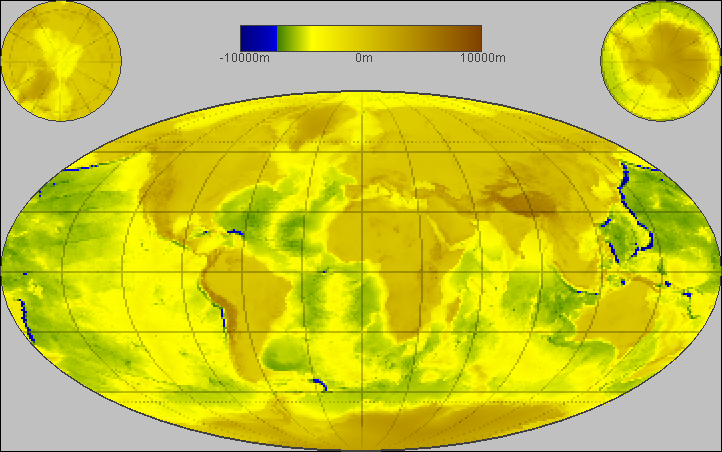
I was also asked what things would look like if the seas rose. There is a surprising amount of change to coast lines by an increase of a mere 50 meters:
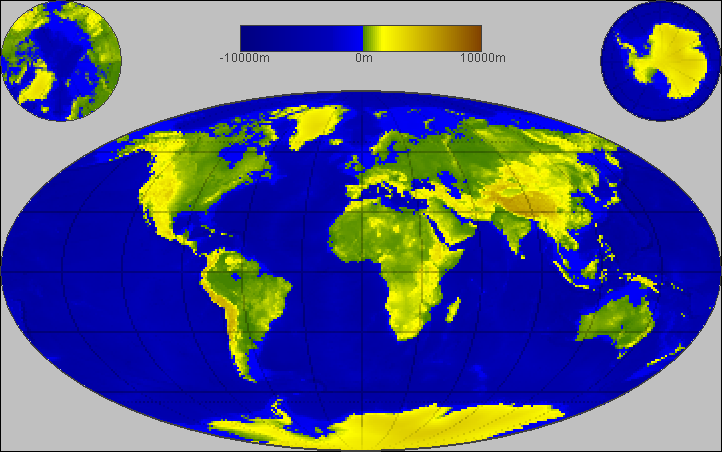
Florida is gone; Western Europe looks noticeably different. Increase the sea level rise to 200 meters, and now the change is rather more dramatic:
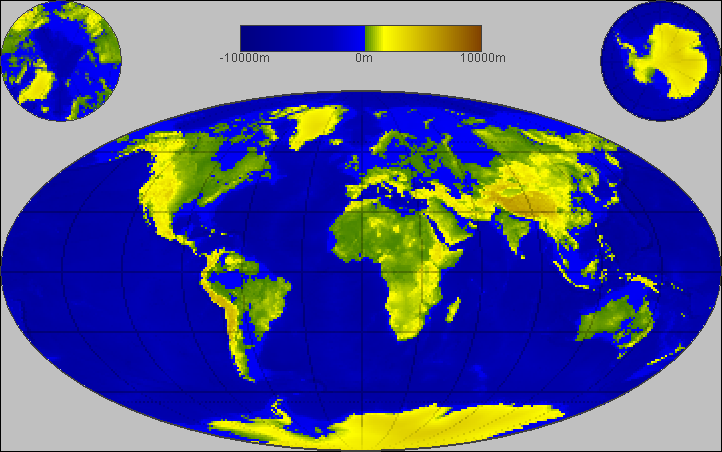
India is now an island or almost so (there may be some land bridges connecting it to the Asian continent that are too narrow to be visible at this map’s resolution). Much of Europe, Russia, Australia, South America, and the eastern parts of North America, gone.
Finally, at 1000 meters, only mountain ranges remain:
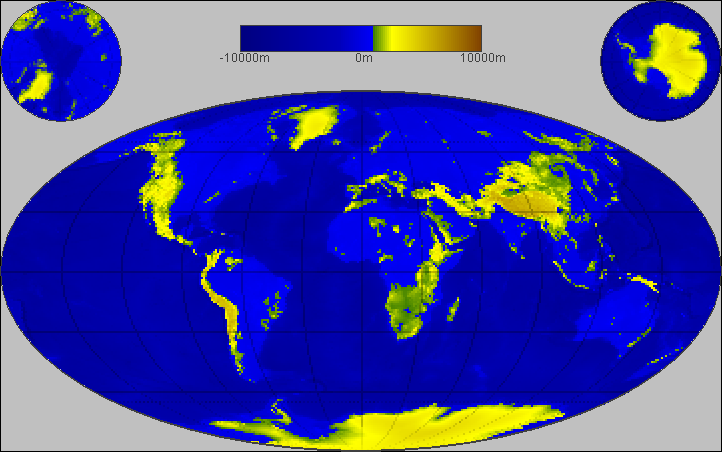
With this little dry land left, there is not much in the way of storms; like Jupiter with its Great Red Spot, the Earth might also develop long-lived storms that circumnavigate the planet many times before dissipating.